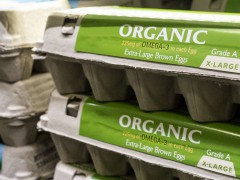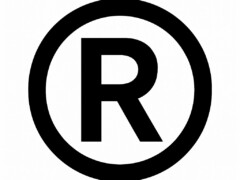Compliance with Prop 65 labeling requirements is an absolute risk mitigation tool for companies selling food in California. This article explains how to apply the statutory warning and outlines alternative compliance strategies that help food manufacturers manage risk and preserve market access.
Safe Harbor: The Full Text of the Warning
California’s Proposition 65 requires businesses to include a specific warning label on consumer products that expose users to chemicals known to cause cancer or reproductive harm. The statutory warning in 27 Cal. Code. Regs. § 25607.2(a) must clearly state the name of at least one listed chemical and identify the type of risk. Applying the full text is the most direct route to avoiding litigation. For food products, the most common phrasing is:
“⚠ WARNING: Consuming this product can expose you to [chemical name], which is known to the State of California to cause [cancer, birth defects, or other reproductive harm].”
This language must appear in a conspicuous font and size, often near the product’s principal display panel or accompanying marketing materials. The California Office of Environmental Health Hazard Assessment (OEHHA) maintains the full list of regulated chemicals and regularly updates required

He just wanted to share his amazing sourdough with the good people of California, but first he has to comply with Prop 65 labeling requirements
language standards.
Why Most Manufacturers Hate Labeling with Prop 65 Warnings
Most manufacturers do not sell products exclusively to the California market. Products from the same production batch often ship nationwide. Companies hesitate to affix warning labels that might confuse or alarm consumers in other states. Customers in other states are just not that savvy about Prop 65. A Prop 65 badge can imply that the product is unsafe—even when exposure levels fall far below federally recognized risk thresholds. Consequently, retailers outside California may reject labeled inventory. For this reason, if a manufacturer is reluctant to use the statutory language, it is important to explore alternative labeling strategies. By doing so, manufacturers can reduce litigation risk while maintaining consumer confidence in food products that may contain trace amounts of Prop 65-listed chemicals.
Alternatives to Prop 65 Labeling Requirements
Several proactive methods reduce risk without undermining consumer trust:
- Finished Product Testing. Routine laboratory testing of finished products can confirm that chemical levels in each batch fall below the No Significant Risk Level (NSRL) or Maximum Allowable Dose Level (MADL). There is no need to trash products that cross a threshold – they are perfectly eligible for sale in other states. Once testing identifies lots that exceed Prop 65 thresholds, the manufacturer diverts those batches to markets outside California. Diversion avoids the need for labeling altogether. This requires tight logistics, traceability, and lot control.
- Supplier Indemnification and Product Specifications. Upstream compliance starts with robust supplier contracts. Manufacturers often include Prop 65 indemnity clauses and require suppliers to warranty that ingredients are free from listed chemicals at actionable levels. These obligations should be tied to detailed product specifications and supported by supplier testing protocols.
- Customer Waivers and Contractual Risk Allocation. For private label or copacking arrangements, manufacturers should shift Prop 65 compliance downstream. Written agreements may assign responsibility for labeling, regulatory compliance, and legal defense to the brand owner or distributor. These contracts require careful drafting and should include indemnity and waiver provisions covering Proposition 65 exposure claims.
Proactive Compliance is the Cheapest Defense
Compliance with Prop 65 labeling requirements should not be reactive potential litigation. Instead, manufacturers should employe some or all of these steps proactively—well before receiving a 60-day notice from a Proposition 65 plaintiff’s firm. Early action and thoughtful planning can integrate testing protocols, supplier warranties, and contractual risk-shifting into standard operations. As a result, food businesses can limit liability and control outcomes long before litigation begins. Ultimately, a disciplined, preventive approach is far cheaper and effective than mounting a defense after a claim.
In this series, we’ll detail other critical aspects of Prop 65. Click below for the next articles in the series:
- Defense Strategies for Big Companies (which will include extensive litigation)
- Defense Strategies for Smaller Companies.
Our subscription service
Clients realize the greatest value out of our services when they stack them together comprehensively. Our subscription-based service plans enable our clients to weave our services into the fabric of their businesses at affordable and predictable rates.
















